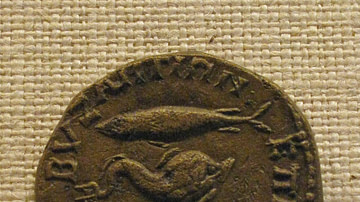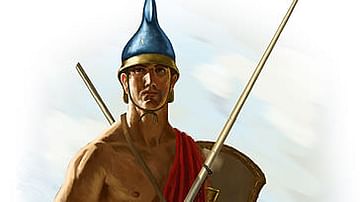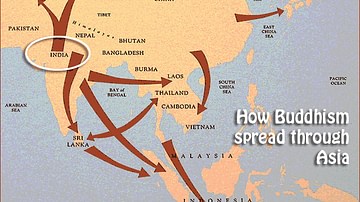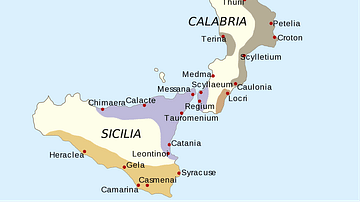Search Images
Browse Content (p. 1759)

Image
Galerius
A bronze nummus of Aquileia depicting Galerius, r. 305-311 CE (Metropolitan Museum of Art, New York).

Image
Map of the World in 1000 BCE
A map of the world in 1000 BCE illustrating:
hunter-gatherers (yellow)
nomadic pastoralists (purple)
simple farming societies (green)
complex farming societies/chiefdoms (orange)
state societies (blue)

Image
Theatre, Carthago Nova
The Roman theatre of Carthago Nova (New Carthage), in modern southern Spain.

Image
Gold Solidus of Antioch
A gold solidus from Antioch depicting Emperor Julian, 361-363 CE. (Metropolitan Museum of Art, New York).

Image
Bronze Coin of Byzantium
Bronze coin of Byzantium: Dolphin flanked by two tunny fish, 146-176 CE. (Metropolitan Museum of Art, New York).

Image
Red-Figure Stamnos Depicting Midas
An Attic red-figure stamnos depicting the satyr Silenus being led before the seated King Midas. c. 440 BCE attributed to the Midas painter. (British Museum, London).
![Pan Statue [Detail]](https://www.worldhistory.org/img/c/p/360x202/1062.jpg?v=1599297302)
Image
Pan Statue [Detail]
A typical depiction of the pastoral god Pan with goat legs and horns. 1st century BCE, from near the theatre of Pompey, Rome. (Capitoline Museum, Rome).

Image
Peltast
A peltast was a type of Greek infantryman who was usually armed with a javelin and who carried a light shield. Originating from Thrace, the peltast was a common sight in Greek warfare during the Classical period and especially following the...

Image
The Spread of Buddhism
A map illustrating the spread of Buddhism from its origins in India in the 5th century BCE with the teachings of Siddhartha Gautama - the Buddha.

Image
Magna Graecia
Magna Graecia (Megalē Hellas) refers to the coastal areas of southern Italy which were colonized by various Greek city-states from the 8th to 5th centuries BCE. Later writers such as Strabo also included Sicily and eventually the term came...